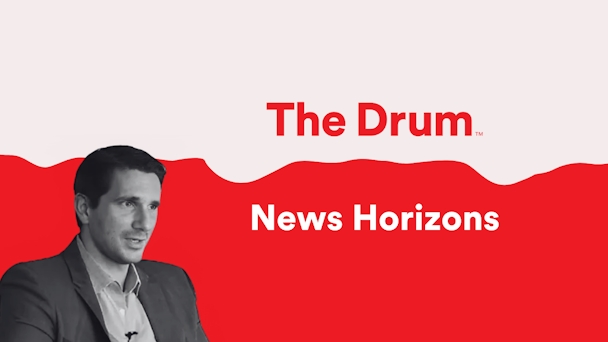Grupo Globo’s Frederic Kachar in conversation
Digital media consultant Mark Challinor continues the News Horizons series by talking to the people shaping tomorrow’s media. Today, he sits down with Frederic Kachar, managing director for print media and radio, Grupo Globo, Brazil.

Frederic Kachar
Frederic holds a degree in Economics from UFRJ (Federal University of Rio de Janeiro), an MBA in Finance by IBMEC and a PGA from Insead. He began his professional career at Deloitte Touche Tohmatsu, where he worked for three years. In 1997, he joined Grupo Globo, as a financial analyst for Infoglobo, the newspaper company of Grupo Globo. With the acquisition of the Diário Popular newspaper in 2001, he became CFO of the publication in April of that year. In the following year, he joined Editora Globo – the magazine company of Grupo Globo, also as a CFO to conduct the company’s turnaround. In January 2008, he took over as company CEO and since then he has been working on the transformation of the digital business and on portfolio increase with new magazine and brand launches.
Could you start by sharing some key areas of growth and challenges your media company has faced this year?
Five years ago, we decided to balance our revenue streams between subscriptions and advertising. So far, the results have been much more positive on the advertising side. For instance, traditional print advertising has surprisingly started to grow since last year, driven by branded content and companies using print to express opinions on national debates or legislative matters. Events have also been a significant growth area for us. We’re hosting over 80 events annually, including international ones like the United Nations Climate Change Summit in New York. Digital advertising and branded content remain strong as well.
What percentage of your revenue comes from advertising, subs, and more?
On the subscription front, we’ve faced challenges. Since 2022, our total subscription volume has stagnated. We conducted pricing tests and raised prices slightly, but the growth we’ve seen is largely from price adjustments rather than volume. Addressing consumer revenue growth is a major concern for the next five years because relying solely on advertising won’t sustain a premium newsroom like ours in the long term.
Where do other revenue streams, like events and e-commerce, fit into your organization? Are these handled by the traditional sales team?
What was once an advertising team is now a business team, responsible for selling events, education, e-commerce, content, and even bulk subscriptions. We’ve invested heavily in training, enabling them to act more like consultants. Their role is to understand client challenges and develop tailored media solutions, ensuring accountability and measurable outcomes. We also analyze feedback from unsuccessful pitches to continually refine our approach. The training consists on understanding the challenges of our clients, understanding the properties that we have, the brands, the formats and the audiences, and with the combination of both, develop media solution that address the challenge.
Have you had to bring in new talent to support this transformation?
Yes, it’s been a mix of retraining existing staff and hiring new talent. We’ve had to replace many people, even within leadership and middle management, to align with the new skill sets required. For instance, we leverage the expertise of journalists from Valor, our leading business newspaper, to train our teams on industry-specific knowledge. However, attracting top talent for sales remains challenging, as sales aren’t widely regarded as a prestigious career path in Brazil. We’re working to change that perception, emphasizing that selling is both an art and a premium skill.
How is artificial intelligence (AI) influencing your business?
AI is both a significant opportunity and a source of sleepless nights for me. On the bright side, AI boosts productivity and enables new product launches. For example, we recently used AI to translate the Valor website into English. We’re also using AI to reduce the time journalists spend on tasks like internal research and headline creation. This allows us to allocate resources more efficiently.
On the flip side, AI poses challenges to intellectual property. Unregulated use of AI enables websites to generate content by scraping and reassembling what we produce, undermining our efforts. These sites often perform well on SEO and social media, which is frustrating. Addressing this issue is critical, but the lack of regulation in Brazil complicates matters.
What role does print play in your advertising portfolio?
Print remains an essential part of our media solutions, particularly for branded content and opinion pieces. For example, during Brazil’s recent tax reform debates, companies and associations used print to express their views and influence discussions. While we do sell print standalone at times, it’s typically part of a broader media package that includes digital takeovers, branded content, and events. Print’s value lies in its ability to capture attention, especially among opinion makers, even with smaller circulations.
Looking ahead, what emerging revenue streams are you exploring?
We’re investing in multiple areas. Podcasts, while challenging to monetize in Brazil, show promise—two of our radio-produced podcasts rank among the top five in Latin America. We’ve also had success with education programs targeting professionals seeking to upskill post-graduation. Licensing is another exciting avenue; for example, leveraging our strong women’s brands for beauty products or our parenting website. While these efforts are in early stages, we expect them to generate meaningful revenue within a few years.
How do you view the future of print in the context of evolving media trends?
Print’s future depends on maintaining a relevant audience and demonstrating its effectiveness to advertisers. Despite predictions of its demise, print is growing for us for the second consecutive year. However, our long-term plan prioritizes sustainability without print. We measure our profitability and EBITDA without print to ensure the business can thrive independently. If print remains profitable, it’s an added bonus, but we’re preparing for a future where it might not be.
What are the biggest challenges facing traditional media companies today?
AI and audience shifts are top challenges. On one side, we have to be fast in productivity because otherwise our competitors will be more efficient than us. On the other hand, how do we protect our intellectual property? So, AI is a big challenge, and how do we regulate it?
As audiences move from websites to apps, publishers struggle to monetize these platforms. Social networks like Instagram and TikTok serve as showcases rather than revenue-generating business units, and this trend is particularly pronounced among younger users.
News fatigue is another challenge. People are overwhelmed by constant updates on crises like wars, climate change, and corruption. Striking the right balance between informing and overwhelming audiences is tricky. Polarization further erodes trust in news, reducing our reach and impacting both advertising inventory and subscription opportunities. Subscription fatigue also plays a role, as households face limits on how many services they’re willing to pay for.
And the opportunities?
We have a strong digital business. Our biggest opportunity is diversification. We’ve successfully developed new revenue streams, such as events, digital initiatives, and licensing. Since 2020, we’ve achieved consecutive years of revenue and profit growth, driven by these newer areas. Cultivating a culture of openness and adaptability within our team has been crucial. Testing hypotheses with an open mind has allowed us to navigate challenges effectively and remain innovative.
Finally, what keeps you awake at night?
AI is my main concern, along with the cultural polarization and challenges we face as a media company. But the successes we’ve achieved over the past few years, coupled with our team’s adaptability and resilience, serve as my sleeping remedy.
More about Mark Challinor: Mark is a commercial and media advertising strategist. He recently led the International News Media Association’s (INMA.org) Advertising Initiative (the news industry’s deeper dive into media advertising). He has also been European and global president of INMA. He produces a monthly Future of Media Advertising newsletter on Linkedin, as well as running an advertising committee made up of senior executives from across the world’s media. Mark is now CEO of News Media UK Consulting. Follow Mark on X: @challinor and LinkedIn.
Last week he spoke to Troels Behrendt Jørgensen, the digital director of Politiken. We’ll be back in 2025.
